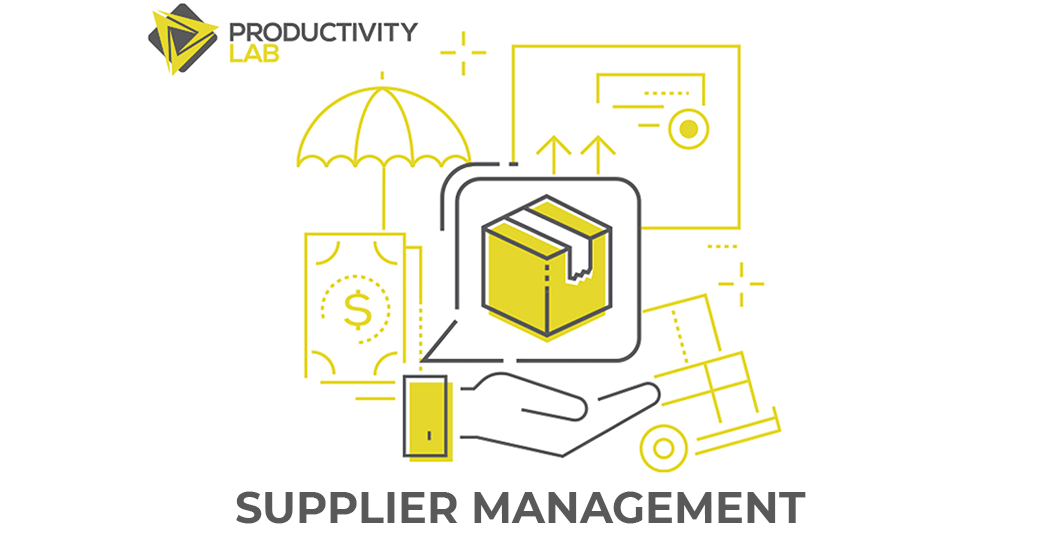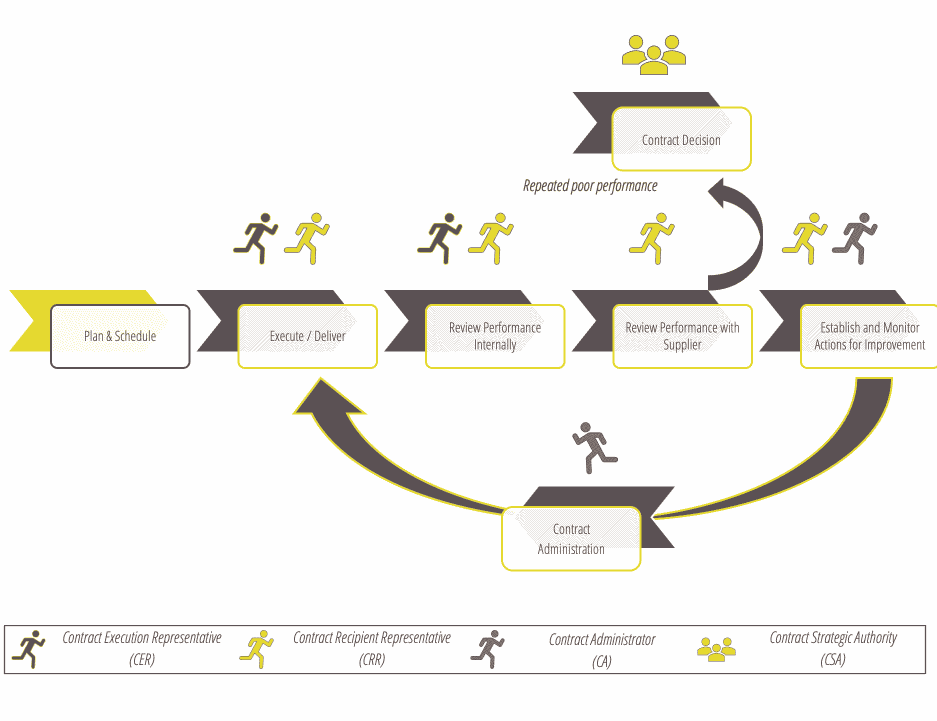
19 May Supplier Performance Management
Supplier Performance is one of the top areas of concern for Procurement professionals, and still, many organizations still do not have proper Supplier Performance Management (SPM) frameworks and supporting IT solutions and data infrastructure in place. Effective SPM though, starts with the basics.
Supplier Performance Management (SPM), Supplier Relationship Management (SRM), Contract Management and Supplier / Contractor Management are terms which are frequently used interchangeably or randomly, sometimes causing unnecessary confusion and frustration.
Definitions may vary across sources, and the definitions for the core elements used in this article are shown below in Figure 1:
| TERM | DESCRIPTION |
|---|---|
| Supplier / Contractor Management (Contractor Management used going forward) | Umbrella term used to manage all aspects of product and / or service delivery from 3rd party contractor |
| Supplier Relationship Management (SRM) | Management and maintenance of a relationship between a buyer and a contractor |
| Supplier Performance Management (SPM) | Management and maintenance / improvement of the agreed / contractually stated performance levels, could be considered part of SRM |
| Contract Management (CM) | All aspects of administration relating to a contract, including creation, maintenance / updates / renewal and certain aspects of implementation, could be considered part of SPM |
Figure 1: Core element definitions
Based on Figure 1 above, there are several linkages and overlaps between the core elements – these are shown in a simplified format in Figure 2 below. Understanding each core element and how they are linked forms the basis for successful Contractor Management. Further illustrated in Figure 2 is the simplified Contractor Management pyramid.

Figure 2: Contractor Management element dependencies and maturity pyramid
While the Venn diagram in Figure 2 shows that each of the three core elements are equally interdependent for successful Contractor Management, the pyramid clearly shows the recommended steps to maturity.
In essence, Contractor Management has CM as its fundament. It is hard to get any kind of meaningful SPM (let alone SRM) going, without a solid contract that is fully understood and agreed to by all key stakeholder, and a robust, well-executed CM framework.
Based on the CM fundamentals, effective SPM can be performed on the basis of the contractually stated performance indicators. Review mechanisms should ideally also be outlined in the contract, including frequency, participants, underlying data etc. It is the responsibility of the procuring party to ensure the necessary management system is in place, in order to effective close the Plan-Do-Check-Act (PDCA) loop around supplier performance.
The last stage of maturity is typically not stated in a contract – SRM is a large topic, and while Quarterly Performance Reviews (QPR) or similar mechanisms are commonly in place, modern SRM relies just as much on informal communication / review among key stakeholders from the procuring party and the supplier. Hence, SRM could be said to be more behavioral, rather than transactional. It could also be said that SRM is advanced SPM, but SRM aims to drive real partnerships between the parties, rather than simply manage a contract. A key aspect of SRM for instance, is to drive innovation among the parties in order to collaborate to improve on the relationship, with the aim to improve performance.
This remainder of this article focuses on Supplier Performance Management (SPM), but as seen in Figure 2, this also necessitates a discussion around Contract Management (CM). Figure 3 below highlights the core components of CM in the context of SPM, splitting the element into two stages:
- Pre-award stage – work taking place before the signing of the contract
- Post-award stage – work taking place after the signing of the contract
| STAGE | COMPONENT | DESCRIPTION |
|---|---|---|
| Pre-award | Type of Buy |
|
| Performance Indicators (PI)1 |
|
|
 Pricing Strategy Pricing Strategy |
|
|
| Carrots and Sticks |
|
|
| Post-award1 | Contract Administration |
|
1 It is considered good practice to include contract compliance / conformance as part of the set of indicators – if not, it would need to be monitored as part of the contract administration phase
Figure 3: Contract Management core components
Of course, there are many more considerations involved in creating and signing a contract, but the above are considered crucial when it comes to laying the foundation for effective SPM.
Before moving on to SPM, it is useful to consider some key roles involved in CM and SPM, as shown in Figure 4 below. The naming conventions used here are generic, and each organization may have different designations, with the roles also potentially being slightly different. The important thing is to ensure that as a minimum, the duties outlined in Figure 4 are covered.
| TERM | DESCRIPTION |
|---|---|
| Negotiating Team (NT) |
|
| Contract Strategic Authority (CSA) |
|
| Contract Recipient Representative (CRR) |
|
| Contract Execution Representative (CER) |
|
| Contract Administrator (CA) |
|
Figure 4: Key SPM Roles
Armed with a solid contract according to Figure 3 and key SPM roles from Figure 4, the simple SPM framework in Figure 5 below can be developed.
Each of the steps shown in Figure 5 may have its own sub-processes – these are not discussed in this article as they depend on a range of factors unique to each organization, including but not limited to nature of business, IT infrastructure and procurement policies.
Planning & Scheduling is included in Figure 5 below, mainly as an input to SPM as planning- and scheduling-related indicators are frequently used in SPM. Indicators such as plan attainment, schedule stability and on-time delivery (mainly for products) rely on inputs from planning and scheduling functions, and it is not uncommon for poor planning and scheduling to affect supplier performance negatively.

Figure 5: Simple SPM framework
As touched on initially, effective SPM is driven by managing the Plan-Do-Check-Act (PDCA) loop for supplier performance management, and it can be done with 2 separate forums, provided they are executed at a high level:
| COMPONENT | DESCRIPTION | R | A | C | I |
|---|---|---|---|---|---|
| Internal Performance Review |
|
CRR,CER | CRR | CA | – |
| Supplier Performance Review |
|
CRR | CRR | CA | CER |
Figure 6: Simple SPM framework – 2 separate forums
With SPM being illustrated as a relatively simple concept (which it is), the majority of larger organizations still struggle to implement it effectively for a range of reasons. Some of the common pitfalls are listed below. If organizations avoid these pitfalls when designing and implementing their SPM frameworks, they stand a good chance in succeeding getting the basics right. The pitfalls are:
- Not including performance indicators in the contract, not having sufficient detail on the what and the how and / or not performance indicators not being agreed with the supplier – ensure the internal view is clear and bring it up at the early stages of negotiations with potential suppliers, without clear contractual clauses on performance management, agreed among all stakeholders, SPM will be a constant, uphill battle.
- Poor quality performance indicators – will eventually lead to frustration and disagreement, spend time thinking through what is important, in the context of the type of the buy, and use SMART.
- Poor data availability / infrastructure – many of the performance indicators in the area of SPM are complex, and rely heavily on effective data infrastructure. The ‘M’ in SMART (Measurable) is frequently overlooked when designing performance indicators, and only after the contract has been signed is it discovered that the indicator can’t be measured or the numbers provided are wrong.
- Inappropriate allocation of time to SPM roles – the CRR is a crucial role, and the more contracts an individual employee has, chances are he or she will have less to time to spend or performing his or her duties. This extends to the CA and to a certain extent also the CER.
- Health Safety & Environment (HSE) is the only aspect being seriously discussed – HSE should be the first and foremost consideration in all business operations, and SPM is not exception. However, if HSE tends to be the only things discuss in the supplier performance review meeting, there is not likely to be any performance improvement in other aspects of the working relationship.
- SPM not prioritized at senior levels of the organization, or treated as a transactional, administrative activity – most companies have significant spend on 3rd party contractors (Rystad Energy projects an average annual spend on energy third party services of US$ 920 billion over the next 5 years, with the majority in the oil & gas industry, particularly within Upstream), and going forward, managing contractor spend and reducing it through increased productivity and improved, data-driven decision making, presents significant opportunities.
Finally, the role of IT in effective SPM can not be understated. There are several dedicated SPM / SRM solutions currently on the market, however, before investing in one of these solutions, it is recommended to get the basics right, as described in this article. Chances are organizations can manage most contract through avoid the pitfalls mentioned above.
The Return On Investment (ROI) from SPM / SRM programs can be significant – some sources even quote a 9x – 11x return – however, it is safe to say that an ROI of 2x – 3x can be realized just from doing the basics right.
Alan Aastorp has built capabilities and delivered performance improvements for over 20 years, including engagements with some of the world’s largest companies, as well having professional qualifications in Supply Chain Management, Finance and HR. Alan can be reached at aastorp@productivity-lab.com.
References
Cips.org. (2022). Available at: https://www.cips.org/intelligence-hub/contract-management.
Cips.org. (2022). Available at: https://www.cips.org/intelligence-hub/supplier-relationship-management.
Aubry, A. (2019). Unit Price Contracts: How do they Compare and What makes them Special? -. [online] Available at: https://www.contractcomplete.com/unit-price-contracts-why-so-special/.
www.clearpointstrategy.com. (n.d.). How To Get SMART With Your KPI Tracking | ClearPoint Strategy. [online] Available at: https://www.clearpointstrategy.com/blog/smart-kpi-tracking [Accessed 11 May 2023].
jlancaster86 (2023). What is a Supplier Performance Management Process? – Definition. [online] oboloo. Available at: https://oboloo.com/blog/what-is-a-supplier-performance-management-process-definition/ [Accessed 4 May 2023].
Rystad Energy. (n.d.). Energy services sector set to grow to $1 trillion in 2025. [online] Available at: https://www.rystadenergy.com/news/energy-services-sector-set-to-grow-to-1-trillion-in-2025 [Accessed 14 May 2023].
supplychaindigital.com. (2022). Top benefits of supplier performance-management solutions. [online] Available at: https://supplychaindigital.com/digital-supply-chain/top-benefits-of-supplier-performance-management-solutions.
Future of Sourcing. (2022). 9 Benefits of Supplier Performance Management Software. [online] Available at: https://futureofsourcing.com/9-benefits-of-supplier-performance-management-software.
www.beroeinc.com. (n.d.). Measuring ROI from Supplier Relationship Management Program. [online] Available at: https://www.beroeinc.com/whitepaper/measuring-roi-from-supplier-relationship-management-program/ [Accessed 4 May 2023].


